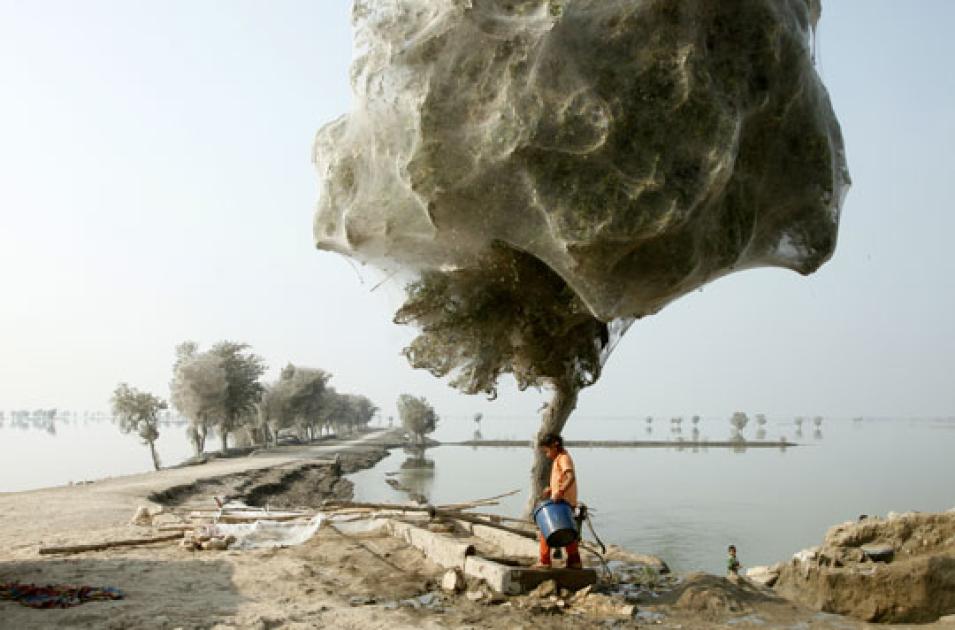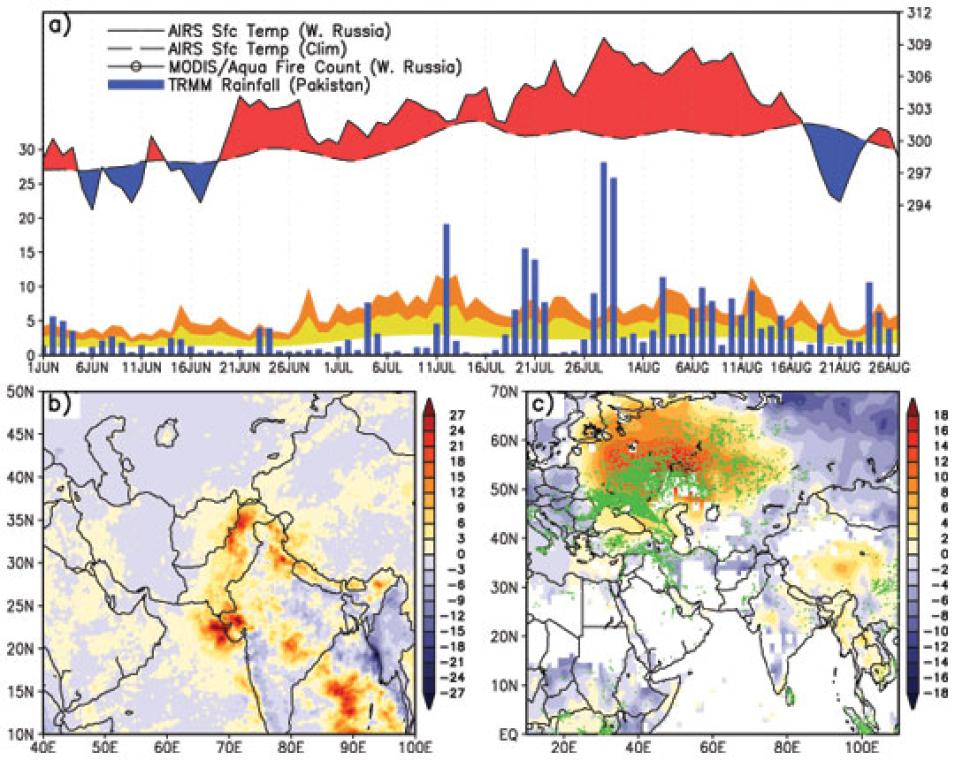A wave impinges
“It was all very strange, so we decided to pick into more data and again look at a much bigger domain,” Lau said. This time he looked at surface temperature data from NASA's Atmospheric Infrared Sounder (AIRS), cloudiness data from NASA's Moderate Resolution Imaging Spectroradiometer (MODIS), and atmospheric pressure, wind, and moisture data from NASA's Modern Era Retrospective Analysis for Research and Applications (MERRA).
Studying an area that extended to Europe and China, Lau found evidence that a series of Rossby waves spanning western Russia and south Asia could have caused the monsoon to shift. Rossby waves are giant meanders in any of the Earth’s jet streams, rivers of wind that circle the globe. Opposing masses of cold polar air sliding south and masses of warm tropical air pushing north can force a jet stream to meander across continents. Areas of low pressure typically develop in the troughs of the waves, while high-pressure areas form in their ridges.
In this case, it was the unusual high-pressure area over western Russia that caused wind patterns to shift the entire South Asian monsoon north and east. It also pulled cold, dry Siberian air over the lower latitudes, which collided with the seasonal warm, moist air arriving over Pakistan from the Bay of Bengal. This was what caused the freakishly heavy rains over northwestern Pakistan.
Lau also saw what had caused the formation of these Rossby waves. The map of atmospheric pressure and wind speeds from NASA MERRA showed a pattern called an atmospheric block hovering over Russia during the last two weeks of the Pakistan rains, an area of high pressure that gets stuck in the jet stream and causes kinks in the normal circulation of wind, temperature, and atmospheric pressure. Atmospheric blocks are natural, but rare; where they form, it gets extremely warm and dry—and downstream of a block, extremely cool or wet.
What hovered over Russia
While the block pushed rains onto Pakistan, under the block, Russia was experiencing its worst heat wave. Record temperatures of up to 100 degrees Fahrenheit and widespread drought caused thousands of peat and forest fires to break out in western and central Russia from late June to early September 2010. The fires caused heavy smog in many urban regions, ravaged 2.3 million acres, and cost the equivalent of 15 billion dollars in damages. About 56,000 people lost their lives from the effects of the heat wave.
Lau said certain interactions between the land and the atmosphere may have intensified Russia’s heat wave and prolonged the atmospheric block. Data from MERRA showed that the initial drought dried the soil, and the lack of moisture slowed the formation of clouds. The 20 percent reduction in cloud cover over western Russia was enough to cause a positive feedback, amplifying the heat wave. This in turn intensified and prolonged the atmospheric block and increased transport of cold, dry Siberian air over the Pakistan region, Lau said.


